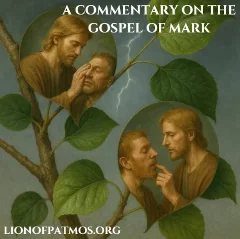Sons of the Land (Mark 3:7-12)
Throughout this gospel we have already seen several miracles, such as the cleansing of the leper, the lifting of the paralytic, and most recently, the restoration of a man’s withered hand, and these have all been types in one form or another for the bruises of Israel being healed through the reconciliat







